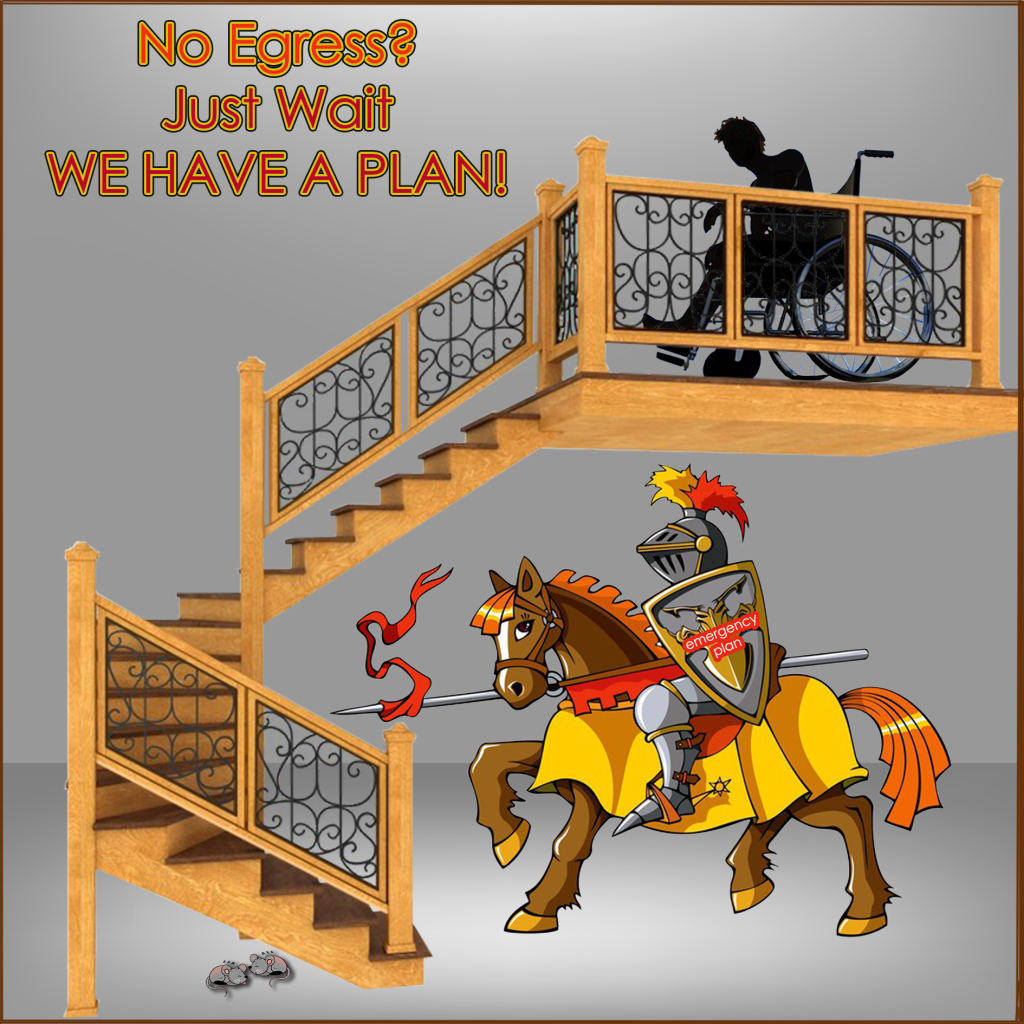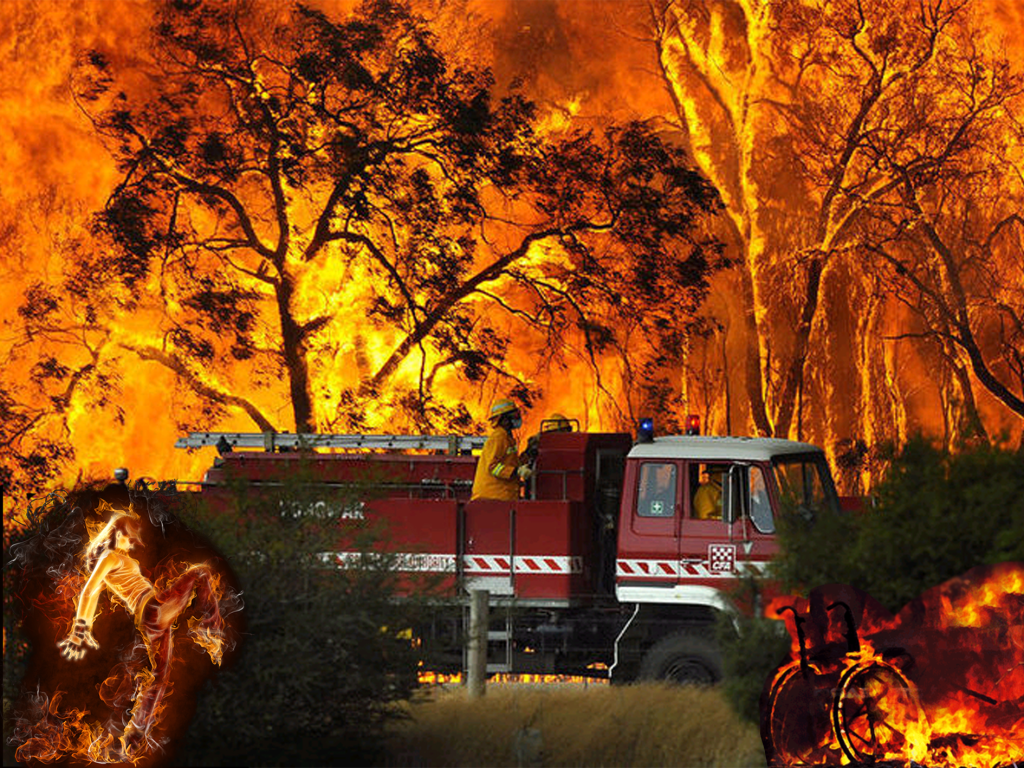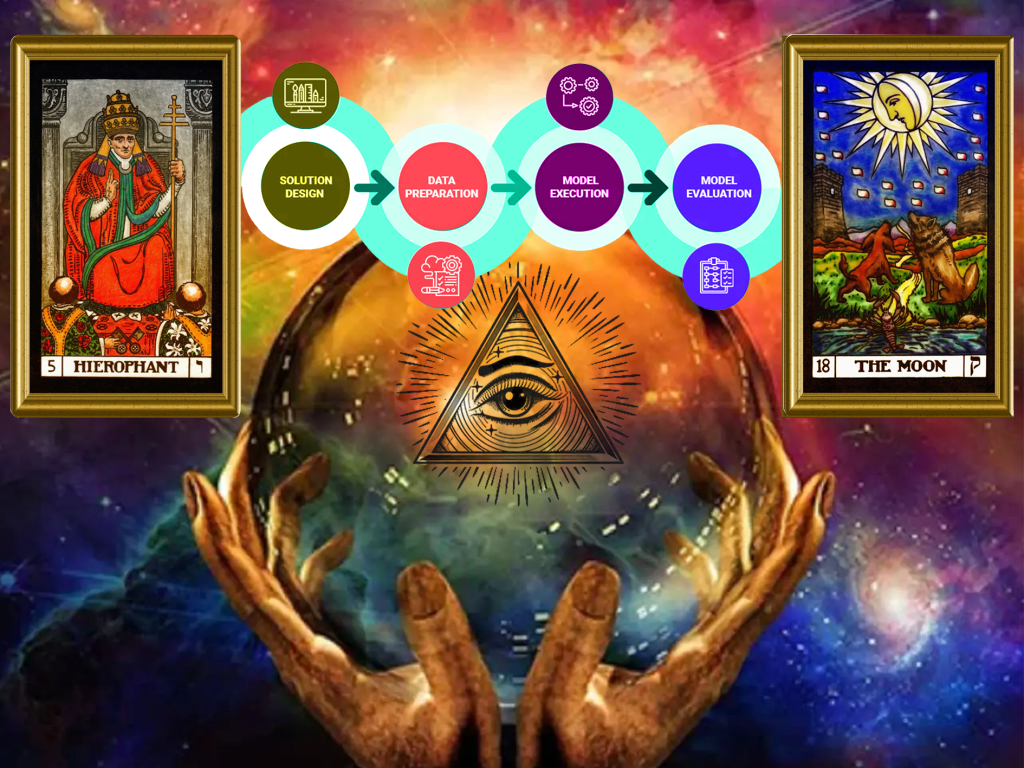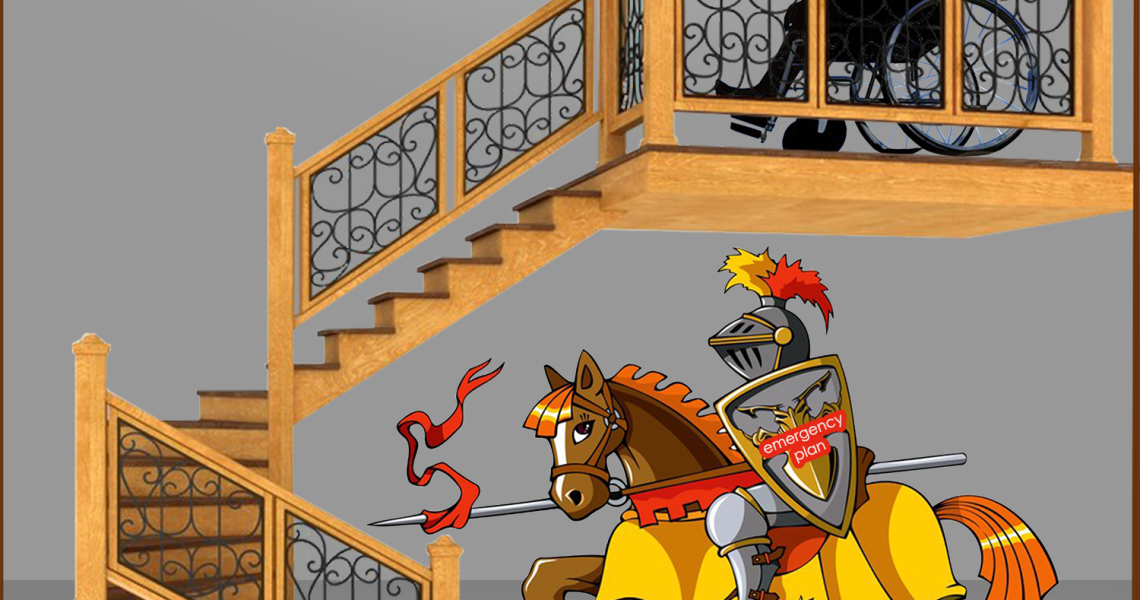Don’t strip me of my wheels to rescue me!

Not so long-ago Tony and I went to a show at a Melbourne Theatre. The wheelchair user seating was on the left-hand wall aisle near the draughty exit doors. There was an option given for Tony to transfer onto a theatre seat. The drawback was the wheelchair would be taken away and stored in the mangers office until after the performance had finished. Does the reader understand why Tony REFUSED the offer?
For most full-time wheelchair users their wheelchair is more than an artificial aid, or a seat to sit on, it is part of their identity which allows them to be mobility “able” and independent. They do not want to be stripped to be rescued.
If a wheelchair user is separated from their wheelchair during an evacuation, they lose all dignity and when they arrive at a safer place, they are invariably immobile and need all sorts of other assistance to move anywhere. They become a problem to the ‘able’ and are placed in a humiliating and distressing position due to the emergency evacuation plan masterminds.
Bushfires, floods, cyclones, earthquakes, and droughts are natural disasters that occur in Australia year in and year out.
Emergency situations, such as a building fire, a terrorist attack, or a cruise ship sinking, or a traffic accident, are stated as dangerous situations that can put one’s health or safety at risk and one does not expect it will happen to them.
Most mobility emergency egress is highly dependent on management practices. Reliance is placed upon the plan itself and the allocated rescuer personnel to do what the plan expects of them as all the other occupants’ race to safer ground. This contravenes equality, there is a limit to the time people can be protected in a safety hub and then how long they are prepared to wait before panic sets in and the amount of assistance each individual with a disability will require varies from nil to significant.
Response and recovery can relate to emergency situations and disaster situations. Natural or man-made. An emergency can usually be responded to using resources at hand that have been planned for and readily available whereby a disaster requires additional resources more than that required to sustain day to day life.
An easy to get to plan that prepares for, has a map of action and clear communication to get all people involved to a safer place in the quickest time frame possible are a must at home grown level not government level. Any person who lives in the bush where tiger snakes are an abundant inhabitant should have a plan and know what to do if a person or pet is bitten.
It is not the government’s responsibility to have an emergency plan in place for all types of situations of emergency danger for every individual. The government’s role in the situation of a snake bite would be to have provided the availability of research and development in finding, funding, and making available an anti-venom, make available readily accessible emergency and medical services when an individual is bitten and to have provided lifesaving first aid education and training to the community at large.
If a fire starts in a high rise building an emergency situation occurs. With adherence to modern time building standards there may be no need to engage external fire authority assistance to remove the ruination threat. The emergency may turn into a disaster if the correct response to the initial threat is not dealt with efficiently and effectively.
A disaster usually requires more resources and an extended time frame to reconstruct and restore basic services and communities to their previous lifestyle standard.
A bushfire may be an emergency or a disaster situation depending on the circumstances of the unique event. Or a bushfire may be planned and managed and as such offers no anticipated threat of emergency or disaster.

Eastern Australia is one of the most fire-prone regions on Earth in which bushfires are a recurring part of living in Australia as are droughts, cyclones, earthquakes, and flooding rains.
Bushfires that cause death and property loss are not universal across Australia nor do they occur at a regular time or place. Spasmodic fire seasons vary widely across states as a reflection of the continent’s different weather patterns and mother nature’s fury.
Most bushfires tend to be located in either the New South Wales region or the Northern Territory of Australia. Yet, four of the five deadliest bushfires on record in Australia have been in Victoria.
In the Black Summer 2019-2020 bushfires involved all Australian states and territories, 34 people died, and 3,094 homes were destroyed.
Black Saturday (VIC), 7-8 Feb 2009, 173 people died, and 2,029 homes were destroyed.
Ash Wednesday (VIC, SA), 16-18 Feb 1983, 75 people died, and nearly 1,900 homes were destroyed.
Black Friday (VIC), 13-20 Jan 1939, 71 people died, and more than 1,000 homes were destroyed.
Black Tuesday (TAS), 7 Feb 1967, 62 people died, and 1,293 homes were destroyed.
Gippsland fires and Black Sunday (VIC), 1 Feb-10 Mar 1926, over the two-month period, 60 people died. On 14 February 1926, 31 people died in Warburton, near Melbourne.
Government inquiries can be completed after the event to establish if any new information can be found to help manage the next such tragic disaster and to examine the “predictive modelling used”.
No one can develop a one size fits all emergency response plan for any natural disaster as the circumstances of the events are unique to what, when, where, and how in the actuality of the tragedy.
Empirical science uses past observations to make predictions about the future, which then may be tested without bias.
Modern science, however, is theoretical science which also makes predictions; however, it derives the predictions from mathematical models rather than from prior observations which can lean on bias as the first step is to decide what they want to achieve. Bias can creep into computer codes in ways that scientists do not foresee when developing them.

Predictive modeling is merely guesswork, usually with a desired outcome, dressed up as scientific analysis.
Computer modelling is as reliable as the data and the algorithm being calculated. Sometimes exceptionally reliable and sometimes not reliable at all. When catastrophic outcomes are derived from these imperfect tools they are reported as being “settled science”. An indisputable forecast of a Future Expectation Appearing Real creating extraordinary FEAR in the community. Yet the predicted outcome could be an absolute UNTRUTH.
The coronavirus modelling needed better inputs to test the assumptions. Our politicians and health officials should understand the limits of what these models can do. For the government to make dramatic policy decisions solely on the basis of very imperfect models is evidence of a confusion between what is science and what is guesswork.
There is too much government and management reliance today on predictive data modelling which we see time and time again predicts the wrong outcome and leads to unnecessary fear, which produces dangerous and shattering situations.
Truth and honesty are forbidden as that would contradict the complex modelling which has determined the action taken in the planned for desired destination.
If management wants “that” result what data does management need to input to the supercomputer…? Quick find that data and get it input…!
Management that invests heavily in modelling is compromised. The people in charge are incentivised to justify the use of their modelling to achieve the answers they desire. This leads management into unexplored territory. Historical facts are seen as inconvenient truth to be ignored or changed and conquered to suit the messaging of the intended schema.
Climate change is a perfect example of this societal predicament.
In the case of bushfires, the temperature, the wind direction and strength, fire whirls, the dryness of the undergrowth, the combustibility of the timber, an adequate supply of oxygen from the ambient air, natural gases, proximity to natural waterways all contribute to the verbosity of the fire and its resulting damage.
In most natural disaster situations, all people affected need access to rescue workers and community support not only people living with disability. Some ‘normal’ people will respond in ways that is foreign to their normal pattern of behaviour and will therefore be in holding pattern of psychological impairment requiring assistance during the rescue evacuation.
Are people who are physically frail or in the last trimester of pregnancy considered as dis-abled during an emergency evacuation? How do the rescue workers know who and where they are?
To believe that a person living with disability can be saved by having an institutional emergency response plan in place is ludicrous and leads to a false reality of complacency. The belief assumes that everyone living with a disability is directly known by government and will be in the place that “the” rescue worker expects them to be in at the exact time the emergency worker arrives to rescue them with all the required equipment to cater for the specific disability at the time of contact.
Unless, of course, as part of the emergency response plan all “disabled” people must wear electronic tracking devices or panic buttons at all times so the government agency or service provider can find them in the case of a natural disaster.
Victoria had a Disability Support Register that was said to be a database used by the Department of Human Services to record all the people who have been confirmed as needing funding (Individual Support Package) to purchase supports that meet their disability needs or Supported Accommodation.
Registers such as the Victorian Government’s Disability Support Register, a database of people with disability as identified and accepted into a funding model, is an extremely limited list of people and represent people with a high level of vulnerability. The police had access to the database and most of the data came from those working with service agencies. No one had a real responsibility for the accuracy of the list and the data was known to often be out of date and unreliable as a road map to find and rescue people living with disability. The new council registers for NDIS recipients are operated in the same fashion and are said to be the road map to ‘rescue’ people with disability in the case of an emergency evacuation.
Such registers are a comfort mechanism to silence discourse and do nothing to allow another to walk a mile is the shoes of people who cannot stand up or walk. The emergency plans experts keep saying the plans have something explicit for the “disabled by society” community. A route to safety. Better to put on some boots that are made for walking and walk all over the many not fit for purpose evacuation plans.
